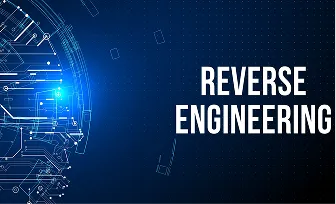Reverse Engineering

Introduction to Reverse Engineering
Reverse engineering is the process of analyzing and deconstructing a product or system to understand its components, structure, and functionality. This technique is commonly used to recreate or improve existing products, especially when original design documents are unavailable. Reverse engineering is widely used in industries like manufacturing, software development, and electronics.
Process of Reverse Engineering
The reverse engineering process typically involves disassembling the object to identify its components, measuring them precisely, and creating a digital model or schematic. This can be achieved through various methods, including 3D scanning, CAD modeling, and component analysis. The objective is to obtain detailed design information that can be used for replication, improvement, or integration into a new design.
Applications of Reverse Engineering
Reverse engineering is used in various industries for purposes such as creating spare parts, improving existing products, and enhancing product designs. It is commonly employed in the automotive, aerospace, and consumer electronics sectors. Reverse engineering is also used to assess competitors' products or replicate items where the original design is no longer available.
Reverse Engineering Tools and Techniques
Various tools and techniques are used in reverse engineering, including 3D scanning, CAD software, and laser scanning technology. 3D scanners capture the geometry of physical objects and create digital 3D models. CAD software like SolidWorks or AutoCAD is then used to refine and modify these models for further analysis or manufacturing. Other techniques, such as X-ray or CT scanning, may be used for more complex internal analysis.
Benefits of Reverse Engineering
Reverse engineering offers several benefits, including the ability to recreate obsolete parts, improve product designs, and gain insight into competitor products. It allows companies to produce replacement parts for discontinued items, identify design flaws, and enhance product functionality. Additionally, reverse engineering can facilitate faster prototyping and product innovation.
Challenges in Reverse Engineering
Despite its benefits, reverse engineering can present challenges, including intellectual property concerns, data accuracy, and technical limitations. Ensuring that the recreated design is accurate and compatible with existing systems can be difficult. Additionally, legal and ethical considerations must be addressed, particularly when reverse engineering competitors' products or patented items.
Reverse Engineering in Different Industries
In the automotive industry, reverse engineering is used to create spare parts and improve vehicle designs. In aerospace, it helps in assessing the performance of critical components. In the electronics industry, reverse engineering is used to understand circuit boards, chips, and devices for repair or improvement. It also finds applications in medical devices, consumer electronics, and military technologies.
Conclusion
Reverse engineering is a powerful tool for innovation, design improvement, and product replication. By understanding and recreating the design of existing products, businesses can improve their own designs, reduce production costs, and enhance their product offerings. It plays a vital role in industries where innovation, product longevity, and efficiency are paramount.
